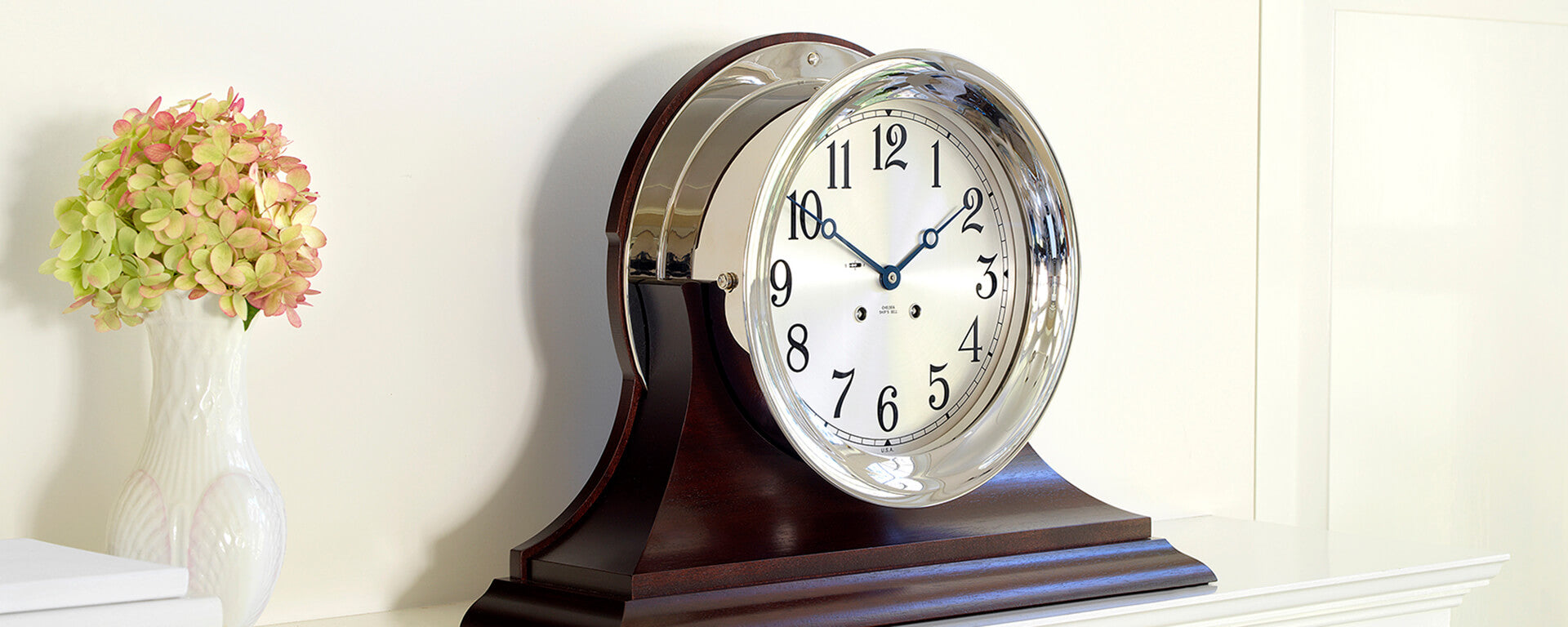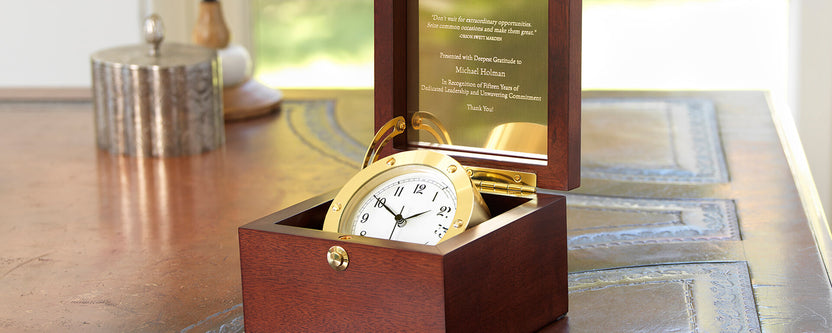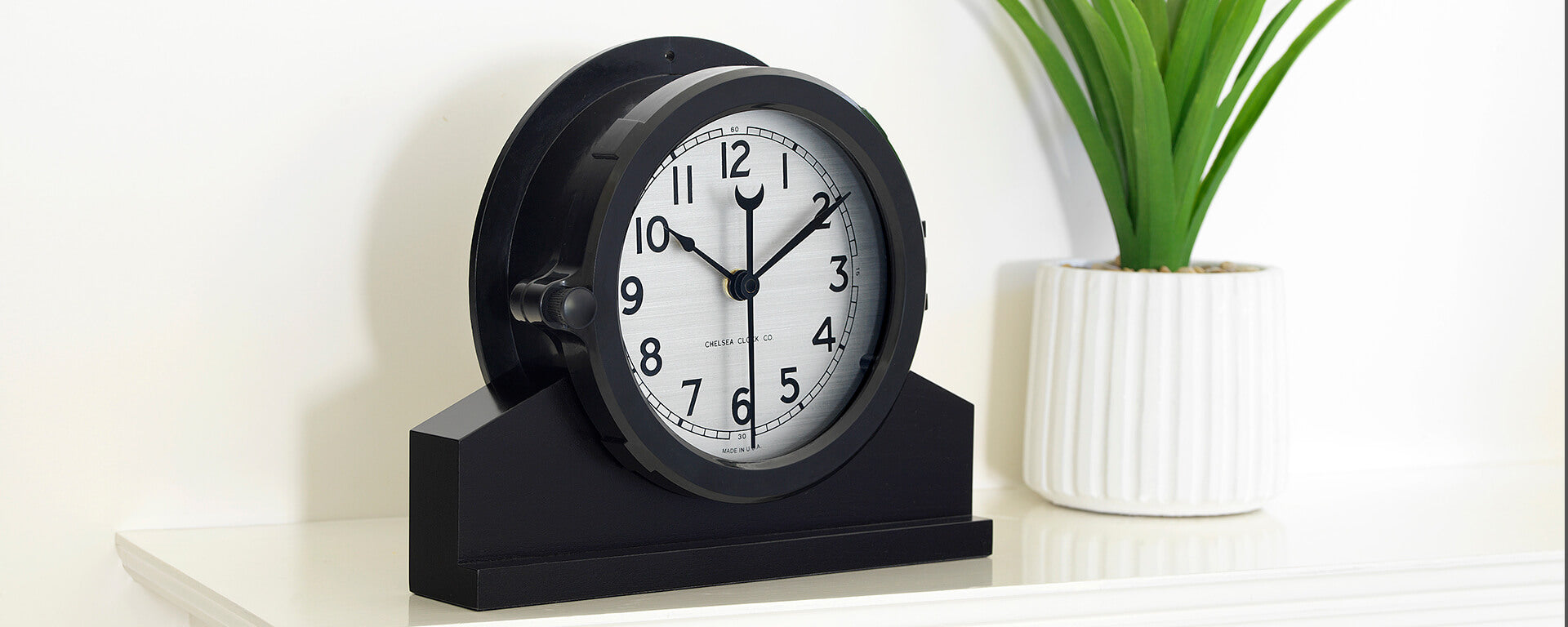How To Wind a Clock: The Ship's Bell Edition
When you own a mechanical timepiece, knowing how to wind a clock is important. These clocks will eventually “wind-down” — and if you don’t wind them up again, all you’re left with is a refined statue or paperweight.
Every Chelsea clock leaves our factory fully wound. However, if you live outside of the Eastern Standard time zone, have purchased a vintage clock or have inherited a family heirloom, you may need to initially set the time yourself. Therefore, let’s start with how to correctly wind chime clocks for the first time.
Winding a New Ship's Bell Clock
If your clock is new, first remove the black tubing from the winding arbor in the front of the clock. Make sure to save the tube for future use (you may want to use it if you ever ship the clock or are away from it for an extended period). To set the time, gently turn the minute hand clockwise to the correct time, stopping at each hour and half-hour point to allow the bells to strike their full count. Never move the hour hand manually — all adjustments should be done by carefully moving the minute hand. Take caution not to force the hands when setting the time. If the hands appear to lock at any point, move the minute hand backward through one striking position, then continue as described.
Keep in mind that, ten minutes before each chime striking point (20 minutes past and 10 minutes ’til the hour), the gears and levers of the striking mechanism begin to fall into the correct positions. Therefore, clock adjustments should never be made in the ten minutes before a strike. It’s also imperative that the minute hand be slowly rotated clockwise approaching each striking point, and the clock must be allowed to strike its full count before moving forward with adjustments. For safety’s sake, it’s best to do all adjustments when the clock reads 5-to-15 minutes past the hour or 25-to-15 minutes before the hour.
Now let’s look at how to wind a clock regularly:
Winding Your Clock
You’ll want to wind your clock carefully each week at approximately the same time. The left keyhole is for winding the strike mechanism and the right one is for the clock’s mainspring. Start on the left and wind both completely. If the clock has run down all the way, it’s extremely important to wind it before touching or moving the hands. If, after you wind it, the minute hand is locked, this means that the mechanism has jammed. To fix the jam, re-wind both sides fully before moving the minute hand backward one hour or more. Then reset the time as described above.
One of the most common questions we get is: is it safe to wind a clock all the way? Not only is it okay, but it’s the only way to do it! Under-wound clocks sometimes have inconsistent chimes or aren’t accurate. So always wind both keyholes fully on every clock in our Ship's Bell Clock Collection.








